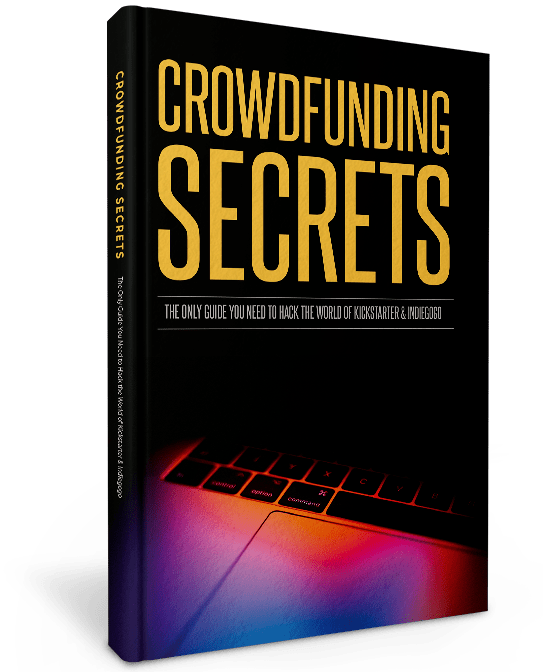Let’s be honest—most Easter campaigns feel like they were pulled from the same tired playbook: pastel palettes, bunny puns, and a generic “spring sale” slapped onto a banner. It’s safe. It’s expected. And for seasoned advertisers? It’s a missed opportunity.
Easter is a unique window in the ecommerce calendar. It doesn’t have the chaos of Black Friday or the pressure of Q4—but that’s exactly why it works. When approached strategically, it offers the perfect moment to grab attention while competition is lower and seasonal intent is quietly on the rise.
If you’ve run enough paid campaigns, you already know: the ads that drive real results are the ones built around behavior, context, and timing.
So, if you’re ready to skip the surface-level stuff and build Easter ads that actually convert, here are the creative, data-backed strategies we’ve seen work time and time again. No fluff. Just ad ideas your competitors won’t see coming.
1. Pre-Easter Warm-Up Campaigns That Don’t Scream “Easter” (Yet)
One of the easiest mistakes brands make? Starting too Easter too soon.
A better move: sneak in through the side door. Start 3–4 weeks out with seasonally relevant, not seasonally obvious, content. Think: spring refresh, post-winter self-care, gifting without the guilt trip. These “Easter-adjacent” campaigns warm your pixel and prime your audience—without exhausting them before the real push begins.
Here’s how this works in practice:
- Meta Reels or Pinterest Ads: Run short, soft-sell content around ideas like “Spring reset must-haves” or “Fresh picks for the new season.” Skip hard CTAs—just inspire.
- Build your retargeting base: Focus on engagement objectives at this stage—video views, time-on-page, add-to-carts.
- Segment and tag those early engagers based on interest (e.g., family gifts, self-care, home refresh).
Then? Flip the switch 10–14 days before Easter with your actual campaign—targeting warmed-up audiences who already interacted with your spring content.
This kind of warm-up strategy does two things:
- Reduces CPA because you’re not fighting for cold conversions on a short fuse.
- Boosts CTR when the final ad comes—because your audience is already mentally in the season.
Pro tip: Make your warm-up ads look nothing like your core Easter campaign. That visual switch will make the paid push feel fresh instead of repetitive.
2. Reverse Funnel Targeting with Value-First Video Ads
Most advertisers treat Easter like a bottom-of-funnel race. Flash sale, discount code, “hop to it.” But if you really want to move the needle, start at the top—then flip the funnel.
Here’s the strategy:
Run emotionally driven, value-first video ads early on—not to convert, but to segment. Think storytelling pieces that lean into the why:
- “What’s in her Easter basket this year?”
- “How we celebrate Easter when our family’s scattered across five time zones.”
- “No candy. Just comfort. Here’s my version of an Easter gift.”
You’re not asking for a sale—you’re creating micro moments of resonance. Then you build a custom audience from viewers who watched at least 50–75% of those videos and push your real offer to them only once they’ve emotionally bought in.
Why it works:
- These viewers are already primed. They didn’t just scroll—they stuck around.
- You’re filtering based on behavior—not demographics alone.
- When you follow up with a conversion ad, you’re speaking to people who actually care.
Bonus optimization tip:
Segment by device and viewing behavior. People who watch your full video on mobile are statistically more likely to convert on a deadline. Run separate retargeting ads for mobile with urgency-based CTAs (“Last day for Easter shipping!”), and you’ll often see a lower CPA compared to desktop-first audiences.
3. Seasonal Lookalikes Built on Purchase Psychology—Not Just Pixels
Most brands throw together a basic lookalike audience and call it a day. But when it comes to seasonal campaigns like Easter, you need to think beyond who clicked last week—you need to find people who think like seasonal buyers.
Instead of relying on your general website visitors or “all-time purchasers,” build lookalike audiences from contextual high-intent groups:
- Customers who purchased during last year’s Easter or Spring window.
- Q4 gift givers who bought for others, not themselves (use tags or UTM tracking data if you’ve got it).
- Users who engaged heavily with your holiday gift guides, quizzes, or product bundles.
What you’re doing here is layering behavior with psychology—targeting people who already have a gifting or seasonal purchase mindset.
Then test two sets of LALs:
- One based on your purchase data (high-AOV Easter buyers).
- One based on engagement (video watchers, bundle page visitors, add-to-cart abandoners).
Run them side by side in your Easter campaign and watch what happens. You’ll often find the engagement-based lookalike audience outperforms your standard buyers—because they’re in the consideration mindset.
This is nuanced segmentation—and it pays off.
4. Offer Angles That Go Beyond “Gifts & Eggs”
Easter is definitely a mindset shift. That’s where most advertisers fall short. They push traditional gift bundles when many shoppers are looking for something more personal, more practical, or more seasonal-without-being-obvious.
Instead of sticking to “Easter gifts for her,” test campaigns that speak to other purchase motivations:
- “Easter Self-Care Kits” → Great for beauty, wellness, and fashion brands targeting shoppers who treat themselves during seasonal transitions.
- “Ready for Family Dinner?” → Perfect for kitchenware, home goods, or food DTC brands. Position your product as the host’s secret weapon.
- “Pre-Summer Refresh” → For skincare, supplements, wardrobe staples—people are mentally done with winter. Lean into that.
Here’s the play: Segment your campaigns by intent, not just age or gender. Build creatives that speak to the “me buyer,” the “home upgrader,” the “last-minute gifter.”
Then let performance data guide you. You’ll likely find the “non-gift” offers drive higher AOV and lower CPA because they’re less saturated and more aligned with personal motivations.
Easter is a flexible season—so build flexible messaging. Meet shoppers where they are, not where you assume they’ll be.
5. Dark Posting UGC with Unexpected Easter Hooks
Most brands playing the UGC game go cute for Easter: pastels, baskets, smiling unboxings. It’s sweet—but predictable. And predictable doesn’t stop scrolls.
Here’s what works better: contrarian UGC that flips the seasonal narrative.
Run dark posts (unpublished Page posts) using creator content that opens with a disruptor:
- “I never do Easter gifts—but this one was too good to pass up.”
- “No bunnies. No baskets. Just something I actually needed this spring.”
- “I wasn’t even looking for an Easter deal, but…”
You’re leaning into relatable resistance—a powerful persuasion tool. Especially effective for audiences that aren’t celebrating Easter per se, but are still open to seasonal purchases. (Think: Gen Z buyers, minimalists, last-minute shoppers.)
Why dark posting? Because it lets you hyper-personalize messaging to each audience segment—without flooding your organic feed or making your campaign feel disjointed.
And the trick here is the contrast. Use raw, unfiltered clips next to your polished branded assets. The mix builds authenticity and authority.
This type of ad earns trust, which is rare in a season full of sugar-coated, try-too-hard messaging.
6. Interest Layering on TikTok: Go Beyond the Trends
Everyone’s rushing to jump on Easter TikTok trends. And while hopping on trends can work, what actually moves the needle is interest layering—a targeting technique that uses TikTok’s behavior signals to refine your reach.
Start with Easter-friendly themes, yes—but don’t stop there. Combine them with deeper behavioral cues:
- Pair #EasterHaul content with “frequent online shopper” or “skincare enthusiast” interests.
- Combine “small business support” targeting with Easter gift messaging for handmade or indie products.
- Serve ads to “gift givers” who also follow creators in your niche (beauty, wellness, fashion, etc.).
Then use Spark Ads to amplify organic-style content that doesn’t feel like an ad. Lead with story—“I had no idea what to get my little sister… until I found this”—and follow with a subtle CTA in the caption or overlay.
TikTok is all about timing and tone. And with the right combination of creator content + behavior-based targeting, you can serve Easter ads that blend into the scroll—but still convert.
Pro tip: Repurpose your top-performing TikTok as an IG Reels Story ad. Often, TikTok content outperforms even on Meta—if it’s emotionally punchy.
7. Google Ads That Work Harder: Go Visual, Go Local
Search campaigns are often the Easter afterthought—everyone’s too focused on Meta or TikTok. But Google can be a quiet goldmine if you skip the generic stuff and go strategic with visual inventory and local intent.
Here’s what seasoned advertisers do differently:
1. Shift to Performance Max or Smart Shopping
Instead of bidding on crowded Easter terms like “gifts for kids,” let Google’s automation pull signals from your product feed and customer behavior.
Feed it Easter-themed creative assets (banners, promo copy, spring visuals) so your ads still feel timely—without manually hunting keywords.
2. Use Local Inventory Ads with Easter Urgency
If you offer regional delivery or same-day fulfillment, geo-target those ads with Easter countdown messaging:
- “Order by April 5 for guaranteed delivery before Easter Sunday in [City].
- “Skip the store—get Easter gifts delivered today.”
3. Go Display-First with Placement Control
Run display ads on high-Easter-traffic placements: recipe blogs, parenting forums, and spring lifestyle content hubs.
Layer custom intent audiences built from past seasonal searchers and bundlers.
8. Retargeting That Leans on Emotion—Not Just Scarcity
Retargeting is often where Easter campaigns go stale. The usual suspects show up: “Don’t miss out,” “Last chance,” “Sale ends soon.” They work—but they’re also everywhere. To stand out, anchor your messaging in emotion.
Here’s what that looks like:
- “There’s still time to surprise them.” – Creates urgency without shouting.
- “It’s not too late to make Easter special.” – Especially powerful for last-minute shoppers feeling the pressure.
Pair emotional copy with dynamic product retargeting—but add a seasonal filter. Only show Easter-ready SKUs or bundles. Even better? Add overlays that show delivery cutoff timers, which tap into urgency and trust.
And if you’ve built a warm audience through UGC or storytelling earlier (see Sections 1–2), now’s the time to cash in. These viewers already like your brand—they just need a nudge that feels personal.
Don’t underestimate timing either. Your best-performing retargeting window might be 48–72 hours before Easter, especially for mobile. Test shorter attribution windows and bump budgets in that final sprint.
9. Bidding Strategies Built for Easter’s Compressed Window
Easter has a tight conversion runway. It’s not like Q4, where you can build momentum for weeks—most purchases happen in the final 10–14 days, with a sharp spike 72 hours before the holiday. That means your bidding strategy has to flex fast.
Here’s the smarter way to scale:
- Start with Campaign Budget Optimization (CBO)
In your awareness and warm-up phase (3–4 weeks out), use CBO with looser targeting and mid-funnel objectives (landing page views, video watches). You’re not driving conversions—yet. You’re building data.
- Mid-cycle? Switch to Target ROAS or Max Conversion Value
As intent rises (10–7 days pre-Easter), shift to value-based bidding. Use historical AOV or Easter bundle pricing as your benchmark. This helps you scale smart, not just fast.
- Final 3–5 Days: Max Conversions + Retargeting Surge
Tighten your retargeting windows, push last-click CTAs, and run Max Conversions for volume. For TOF, consider pausing or downscaling entirely to preserve budget.
Bonus: If you’re using Performance Max or Meta Advantage+, manually adjust asset groups to prioritize Easter creative and messaging as the date nears. Don’t let your best ad get buried by evergreen content.
Conclusion
The best-performing Easter campaigns aren’t the loudest—they’re the most intentional.
They’re built on precise targeting, smart sequencing, emotional relevance, and a deep understanding of why people shop during this short, often-overlooked holiday window.
Easter is a marketer’s sweet spot: low competition, high emotional upside, and just enough urgency to spark action—if you time it right. So skip the fluff, lean into behavior-driven tactics, and run campaigns that feel more personal than promotional.
Whether you’re warming your audience with spring-forward content, retargeting like a human (not a robot), or testing bold visuals that defy expectations, every move you make should be rooted in what actually converts—not what looks seasonally appropriate.
Targeted. Optimized. Scaled.




Comments